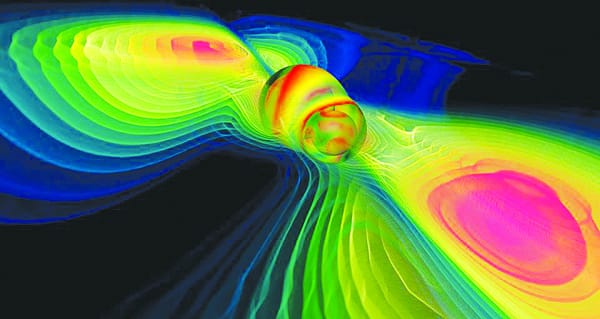Water landslides?
Landslides aren't just dirt
We are all familiar with the catastrophic consequences a landslide can have. Only last week, 250 people were trapped in their hometown in Idaho, USA, as a result of a massive landslide blocking the highway connecting them to the rest of the world. This week, one man died and another two were injured during a minor landslide in Ara Damansara, Malaysia, and five villages were covered in dust and debris threatening residents with suffocation, as a result of a dry landslide at Myagdi, a popular tourist destination in Nepal.
However, landslides are not a phenomenon limited to terrestrial environments. They are known to occur underwater as well and may have devastating consequences. Around 8200 years ago, such a landslide occurred somewhere between the North Atlantic and the Arctic Ocean, off the coast of Norway. Sediment that had been collecting for thousands of years at the edge of the continental shelf started sliding down the Norwegian sea resulting in area of sediment the size of Maine travelling at speeds of over 40 miles per hour.
This massive relocation of land also moved tonnes upon tonnes of seawater, sending tsunamis crashing over northern European shores submerging areas as far as 20 metres underwater.
“It’s hard to even comprehend the size of a landslide like this,” says geologist Peter Talling of the United Kingdom’s National Oceanography Centre.
“A single landslide can move more sediment than all the world’s rivers move in a year.”
Although underwater landslides of this magnitude are not as common, smaller landslides do occur more frequently than you might expect. Many are known to have taken place only in the last few centuries, often causing small tsunamis, with recent research suggesting the 2011 Tsunami that struck Tohoku, Japan, was only as devastating as it was due to an underwater landslide triggered by the earthquake.
In the past, the only evidence of these immense geological events was scarring of the seafloor, which could only be recognised through comparison of different seafloor mapping attempts. A series of underwater landslides that occurred at Prince William Sound in the Gulf of Alaska in 1964 were only identified 60 years later, after a new mapping expedition compared its results with the previous map which had been generated 16 years prior to the landslides.
Now through the employment of advancements in sonar technology we are able to get a more detailed glimpse into the history of such phenomena. Multibeam sonar, for example, provides a detailed model of the seabed surface, while sparkers, electrodes emitting high-frequency acoustic pulses can penetrate multiple sedimentary layers. Such data can provide information on the size, shape and path of landslides.
Yet, even though we now know more about these phenomena than we did before, predicting when the next underwater landslide might strike remains a challenge.
“Right now, to answer that question, one of the best things we can do is keep looking for evidence of past landslides in places that we know have had big tsunamis’’ says Lesli Wood from the Colorado School of Mines.
Indeed, with such range of size, impact and conditions surrounding these events, it is hard to formulate rules to predict when, where and how powerfully the next one might be. Topography, water quality and sediment composition all affect how the seabed might react, so detailed analyses of seafloor samples from earthquake ridden areas can provide crucial data that can help build predictive models.
To promote research, collaboration and awareness, Wood created an open source database describing over 300 landslides based on their shape and size. She hopes that soon the database will be enriched with much needed geological data that will enable risk assessment of precarious areas, providing crucial information to the engineering community.










